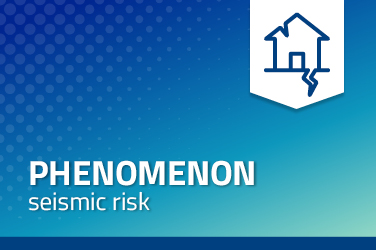The phenomenon - Seismic risk

The Earth is a dynamic continually evolving system, made up internally of rocks of different density and material characteristics subject to different pressures and temperatures. This great lack of internal homogeneity causes forces to develop in the layers nearer the surface, which tend to rebalance the system by pushing the masses of rock against each other, deforming them. The earthquakes are an expression and a consequence of this continual evolution, which occurs over hundreds of thousands and even millions of years.
An earthquake manifests itself as a violent rapid earth tremor and happens unexpectedly without prior notice.
Seismic activity only concerns the Earth’s layers nearest the surface, crust and upper mantle. The solid outer layer of the planet’s surface, the lithosphere, is made up of plates that move, collide and push each other and rise up to form wedges.
The movements of the plates cause strain and energy to accumulate deep down below. When the strain is greater than the shear strength, the rocks break to form deep cracks called faults, the accumulated energy is freed and an earthquake occurs. The freed energy travels through the earth in the form of waves that, having reached the surface, manifest themselves as rapid movements of the land that strike people, buildings and the surroundings.
An earthquake, especially a strong one, is characterised by a series of tremors called seismic period, which at times precede and almost always follow the main tremor. The swaying due to the passage of seismic waves causes buildings to be pushed backwards and forwards and causes serious damage or even collapse if the buildings have not been constructed to anti-seismic criteria. Earthquakes also generate secondary effects, such as landslides, tidal waves, land liquefaction and fires that sometimes cause more damage than the tremor itself. At the same distance from the fault where the earthquake was generated (hypocentre) the shaking of building will depend on local conditions, in particular on the kind of surface ground and the shaping of the landscape.
Two different quantities are used to define the force of an earthquake: magnitude and macroseismic intensity. Magnitude is the unit of measurement that expresses the energy released by the earthquake as a number on the Richter scale. Macroseismic intensity is the unit that measures the effects caused by an earthquake, expressed in degrees on the Mercalli scale.
To calculate the magnitude, the earthquake must be recorded on a seismograph, an instrument that records the shaking of the earth during a seismic tremor even at a very great distance from the hypocentre. Whereas, macroseismic intensity is attributed to each place where the earthquake is felt, after having observed its effects on man, buildings and the environment. They are therefore different quantities and cannot be compared.